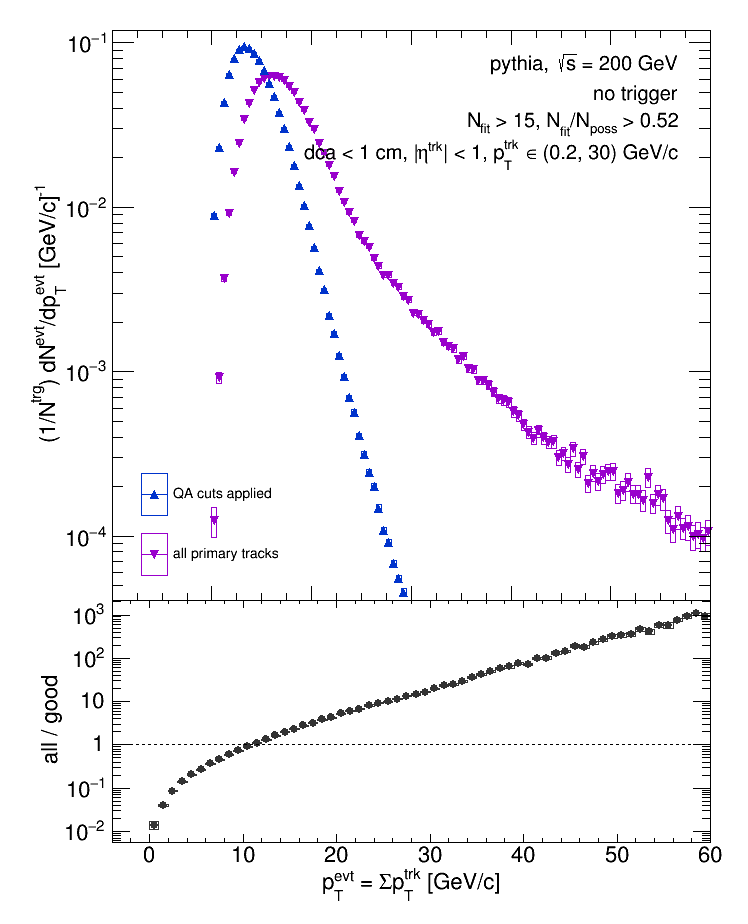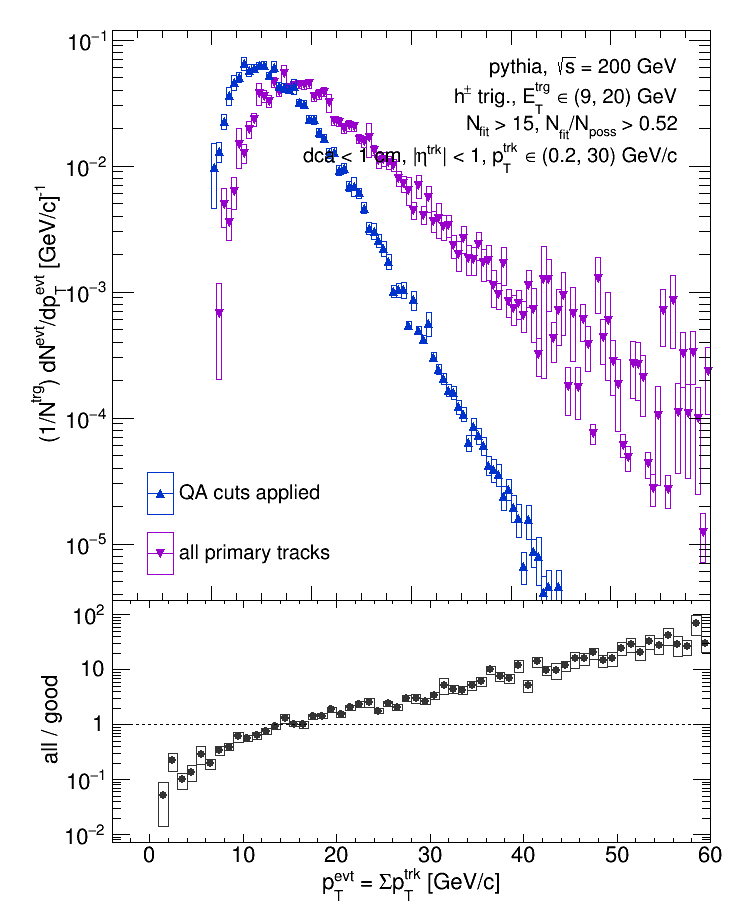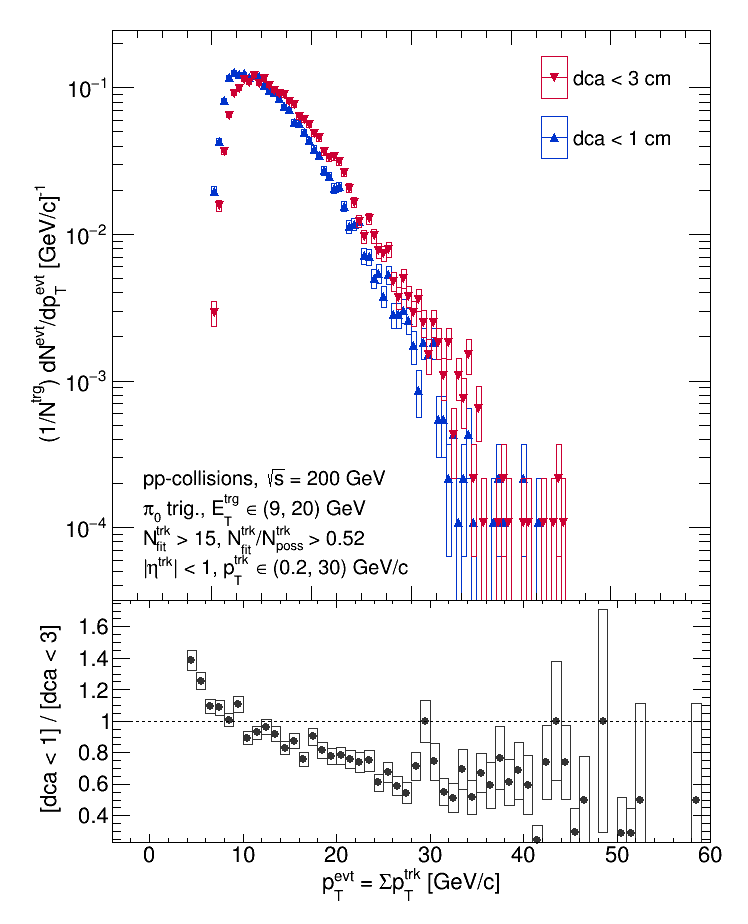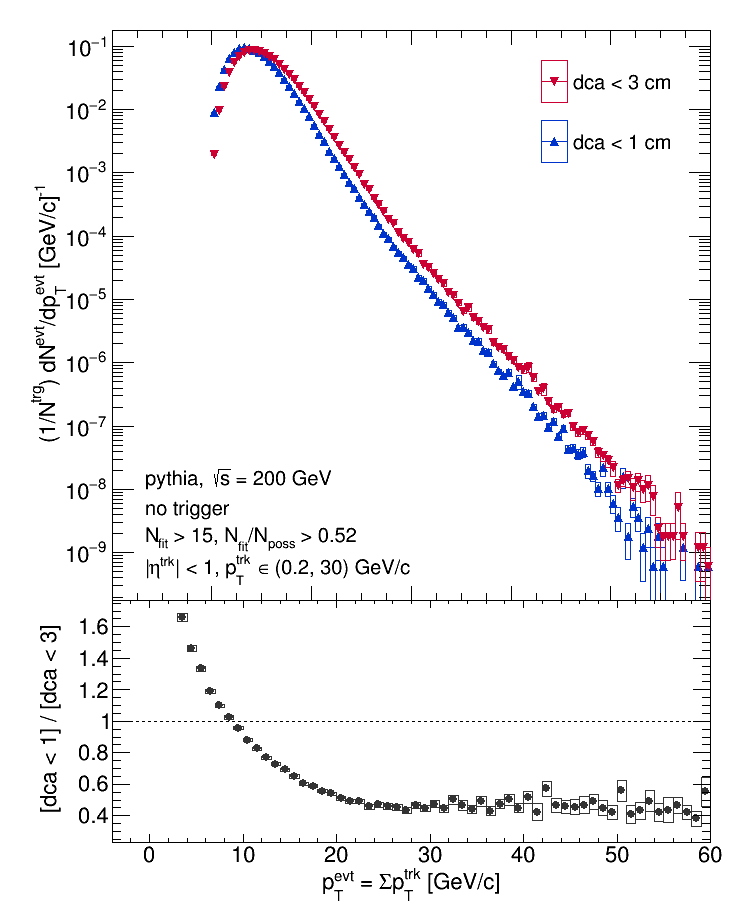Update [12.29.2019] -- Event Pt in Run 9 pp Data and Embedding
We've been trying to assess how big of an effect feed-down from secondary vertices have on our analysis. Some of our previous efforts can be found here:
https://drupal.star.bnl.gov/STAR/blog/dmawxc/update-12192019-understanding-turning-decays-vs-run-9-dijet-embedding-sample
https://drupal.star.bnl.gov/STAR/blog/dmawxc/update-12192019-tracking-efficiencies-decays-vs-run-9-dijet-embedding-sample
The hadron-jet analysis STAR published in 2017 assessed the effect of secondary vertices by considering the "total event pT" in Pythia for all particles, primary particles, and primary particles with dca < 1 cm. This is plotted here:

As there is practically no difference between the primary particles' spectrum and the dca < 1 cm spectrum, the authors concluded that systematic is extremely small and thus they didn't correct for it in their analysis. The analysis note can be found here:
https://drupal.star.bnl.gov/STAR/starnotes/private/psn0660
I decided to check "event pT" in our pi0-triggered data and in the run9 dijet embedding sample we've been using to assess detector effects. It's not clear (to me at least) from the analysis note what exactly went into "event pT"... So below I'll take "event pT" to mean the pT sum over all tracks in an event who have passed our QA cuts (listed on the plots). In each comparison, I'll show three plots: pi0-triggered data, embedding events without any trigger, and embedding events with a charged hadron trigger.
First, I tried checking "all primary particles" -- which here I just take to mean all primary tracks -- against all primary particles which pass our QA cuts as a function of "event pT" as defined above.



Next, I tried comparing "event pT" for all tracks passing our QA cuts but varying the dca cut:



In all cases, there are sizable differences. However, I might not be looking at the same thing the hadron-jet analysis was looking at it...
- dmawxc's blog
- Login or register to post comments
